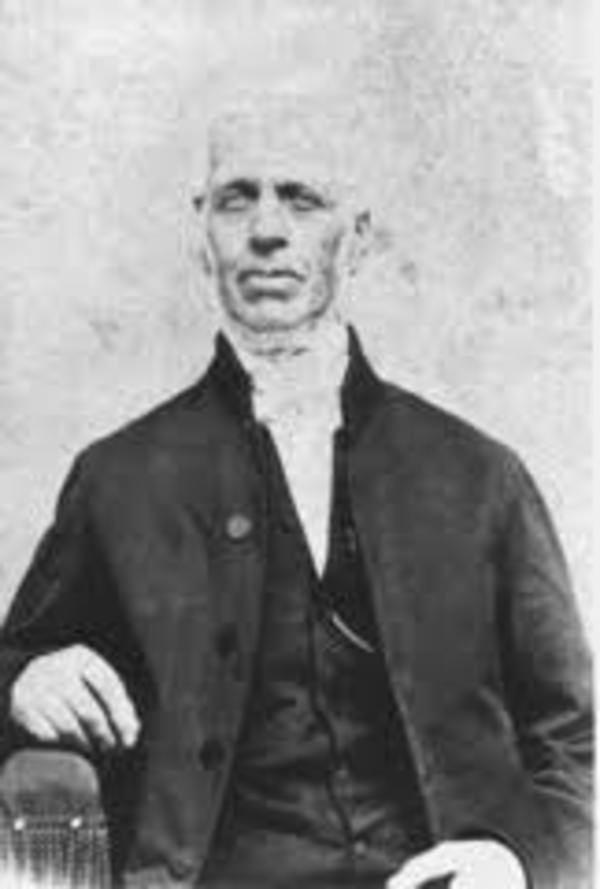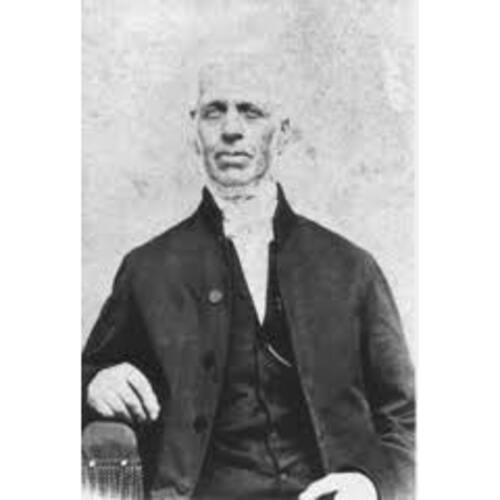
Source: Link
COATES, RICHARD, musician, painter, sawmill owner, and organ builder; b. 30 Nov. 1778 at Thornton Dale, Yorkshire, England, the son of Richard Coates and Dorothy Reynolds; m. on 5 Nov. 1805 Isabella Smith, and they had at least three children; d. 29 Jan. 1868 in Aldborough Township, Ont.
Nothing is known about Richard Coates’ education. He is reported to have played in a British army band during the Peninsular War and to have been a bandmaster at the battle of Waterloo. On 13 May 1817 he arrived at Quebec where he stayed for 15 months before settling at York (Toronto). Like Louis Dulongpré* of Montreal, Coates was active in both music and the fine arts. Henry Scadding* recalled Coates as “an estimable and ingenious man, whose name is associated in our memory with the early dawn of the fine arts in York. Mr. Coates, in a self-taught way, executed, not unsuccessfully, portraits in oil of some of our ancient worthies.” When he petitioned for land as a settler in 1824, he described himself as a painter at York. In 1831 Coates moved to Trafalgar Township, east of present-day Oakville, where he acquired land and set up a water-powered sawmill and a threshing mill. His business prospered and he and his sons were esteemed for their honesty and pleasant banter. Shortly after 1860 the economic depression forced Coates to leave the Oakville area, and he spent his last years on a farm, part of which is now in the village of Rodney.
Although Coates does not appear ever to have been a resident of Hope (Sharon), Upper Canada, he was associated for several decades with the Children of Peace, a religious group led by David Willson who inhabited that village. It is not known whether he was a member of the group, but its musical and artistic needs provided an outlet for his talents. He painted the symbolic pictures for the temple at Sharon, titled “Peace” and “Plenty,” in which a modern art critic has detected some of the “naïve quality of early Quebec ex-votos.” At various times he acted as choirmaster or bandmaster for the Children of Peace and also gave individual lessons on various instruments. William Lyon Mackenzie heard Coates play the “concert horn” in the small orchestra at Sharon in 1829. Undoubtedly much of the credit for the excellence of the band and the choir at Sharon belongs to Coates.
Although Coates was probably Toronto’s first resident painter, he is best known as an organ builder, a craft to which he could bring his musical training and his interest in mechanical gadgets. He is reputed to have built seven organs. Of three that he made for the Children of Peace, the first, built about 1820 and preserved at Sharon, may be the oldest surviving, if not the first instrument of its kind built in Canada. It has no keyboard but two barrels with ten sacred tunes each, nearly all of which are British in origin. It is probably the organ Mackenzie described as “full-toned and soft-set.” The second organ was similar in design but had three barrels of ten tunes each, including traditional ballads and hymns. It was placed in the study of the leader of the Children of Peace, but later had other owners. The third organ was built in 1848 for the Second Meeting House at Sharon. It has a keyboard and approximately 200 pipes and is the largest of the known Coates organs. It has been displayed in the Sharon Temple since about 1913. At the age of 79 Coates was commissioned to build a keyboard organ for St Jude’s Church at Oakville; it gave the congregation “great satisfaction” until it was discarded about 1899. Scadding remembered that even in his Toronto days Coates had one of his own organs in his home; it is still in family hands.
Coates is also reputed to have built a four-foot telescope for his own use, an “elegantly-finished little pleasure yacht, of about nine tons burden,” as well as a “pulmoter,” a gadget to revive drowning persons which was successfully used on the Toronto waterfront to save dogs, though not human beings.
W. L. Mackenzie, Sketches of Canada and the United States (London, 1833). Scadding, Toronto of old (1873). Landmarks of Can. J. R. Harper, Early painters and engravers; Painting in Canada, a history (Toronto, 1966); A people’s art: primitive, naïve, provincial, and folk painting in Canada (Toronto, 1974). Helmut Kallmann, A history of music in Canada, 1534–1914 (Toronto and London, 1960). A. H. Lightbourn, Saint Jude’s Church, Oakville, 1842–1957, an historical sketch ([Oakville, Ont., 1957]). Emily McArthur, A history of the Children of Peace (Newmarket, Ont., [n.d.]). C. E. McFaddin, “A study of the buildings of the Children of Peace, Sharon, Ontario” (unpublished ma thesis, 2v., University of Toronto, 1953). H. C. Mathews, Oakville and the Sixteen: the history of an Ontario port (Toronto, 1953). Tim Classey, “The old pipe organ,” York Pioneer (Toronto), 1974, 67–69. E. W. Trewhella, “The story of Sharon,” Newmarket Era (Newmarket, Ont.), 14 June 1951–27 March 1952.
Cite This Article
Helmut Kallmann, “COATES, RICHARD,” in Dictionary of Canadian Biography, vol. 9, University of Toronto/Université Laval, 2003–, accessed December 22, 2025, https://www.biographi.ca/en/bio/coates_richard_9E.html.
The citation above shows the format for footnotes and endnotes according to the Chicago manual of style (16th edition). Information to be used in other citation formats:
| Permalink: | https://www.biographi.ca/en/bio/coates_richard_9E.html |
| Author of Article: | Helmut Kallmann |
| Title of Article: | COATES, RICHARD |
| Publication Name: | Dictionary of Canadian Biography, vol. 9 |
| Publisher: | University of Toronto/Université Laval |
| Year of publication: | 1976 |
| Year of revision: | 1976 |
| Access Date: | December 22, 2025 |



